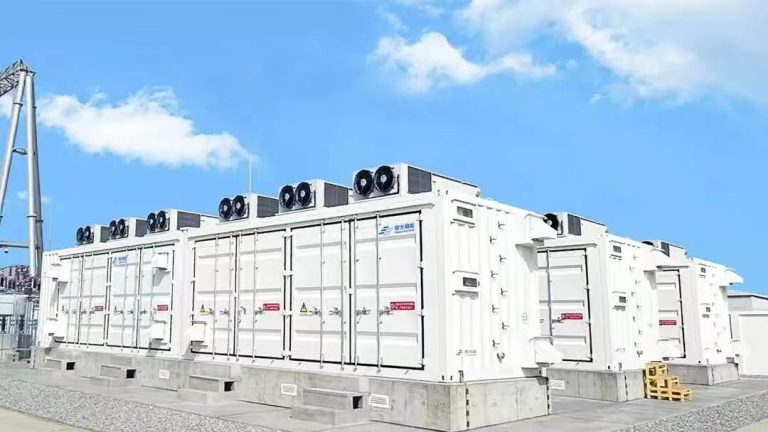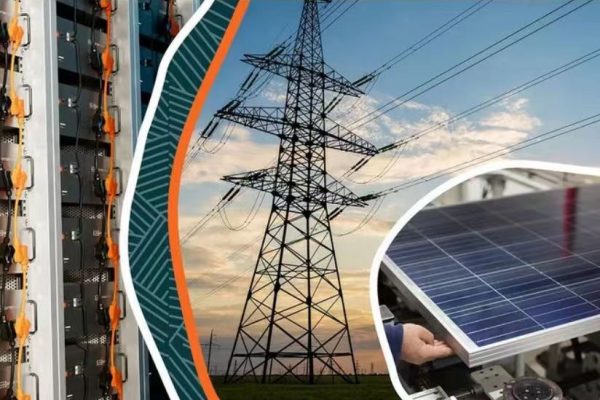Industrial parks face complex energy challenges: high peak demand, fluctuating renewable generation, and multiple facilities with diverse loads. Implementing a microgrid optimized with modular energy storage systems (ESS) provides a solution that reduces costs, improves reliability, and increases renewable energy utilization.
This article explores practical optimization strategies, real-world deployment insights, and technical best practices for replicable and reliable industrial park microgrids.
1. Microgrid Design Considerations
a) Load Diversity and Peak Management
Industrial parks typically include:
- Manufacturing units with high and variable loads
- Office buildings and utilities with consistent base loads
- Critical processes requiring uninterruptible power
Design Implication:
The microgrid must handle diverse load profiles, with ESS sized to smooth peaks and provide backup for critical equipment.
b) Renewable Integration
- PV and wind can reduce reliance on grid power.
- Fluctuating generation requires energy storage for load balancing.
- EMS forecasts generation and consumption to optimize dispatch.
c) Reliability and Redundancy
- Critical facilities cannot tolerate downtime.
- Redundant modular storage and distributed inverters increase fault tolerance.
- Modular design allows hot-swap replacements without shutting down the microgrid.
2. Modular Energy Storage Strategies
a) Scalable Modular Design
- Modular LiFePO₄ batteries (e.g., 10–50 kWh units) allow incremental expansion.
- Modules can operate independently, ensuring system flexibility and maintainability.
- Centralized EMS coordinates multiple modules across the park.
b) Load Shifting and Peak Shaving
- Discharge batteries during peak tariff periods to reduce grid costs.
- Charge batteries during off-peak or excess renewable generation.
- EMS algorithms balance grid interaction, storage SOC, and load priorities.
c) Distributed vs Centralized Storage
- Distributed: Near high-demand facilities for localized peak shaving.
- Centralized: Easier to maintain and integrate with EMS.
- Hybrid approach: Combines both for optimal performance.
3. EMS-Driven Microgrid Optimization
a) Predictive Control
- EMS forecasts energy usage and renewable generation using historical data and weather predictions.
- Predictive algorithms optimize storage dispatch, avoiding unnecessary cycling.
b) Real-Time Monitoring
- Module-level BMS feeds data to EMS: voltage, SOC, temperature, and fault status.
- EMS can reallocate power, isolate faulty modules, or adjust dispatch schedules.
c) Load Prioritization
- Critical loads always powered, non-essential loads deferred during low generation.
- EMS ensures continuous operation while maximizing energy efficiency.
4. Real-World Case Study: Industrial Park Microgrid
Project Overview:
- Location: Southeast Asia
- Park Size: 50,000 m², 15 factories and office units
- System: 500 kW PV + 1 MWh modular ESS + EMS
- Objective: Reduce peak demand charges, integrate PV, and ensure operational reliability
Implementation Highlights:
- 50 × 20 kWh modular LiFePO₄ units with hot-swap capability.
- Distributed storage near high-demand factories and centralized storage for base load.
- EMS coordinated PV production, storage dispatch, and grid interaction.
- Predictive peak shaving reduced tariff charges during critical periods.
Results:
- Peak demand reduced by 18–22%
- Grid energy consumption optimized, reducing energy cost by 12% annually
- Module-level hot-swap allowed maintenance without microgrid downtime
- Renewable utilization improved by 30%
Lesson Learned:
Modular storage + EMS predictive control provides a scalable, flexible, and reliable microgrid solution that can grow with industrial park expansion.
5. Key Technical Insights
- Modularity ensures flexibility: Scale ESS incrementally as load grows.
- Predictive EMS control minimizes cycling: Extends battery life and reduces OPEX.
- Distributed storage enhances reliability: Reduces impact of localized faults.
- Hot-swap modules simplify maintenance: Avoids full system downtime.
- Data-driven optimization: Real-time monitoring allows proactive interventions.
6. Implementation Best Practices
| Aspect | Recommendation |
|---|---|
| Modular Storage | Stackable, hot-swap capable, redundant |
| EMS | Predictive control, load prioritization, PV integration |
| Thermal Management | Ventilated enclosures, temperature monitoring |
| Grid Interaction | Peak shaving and energy arbitrage |
| Maintenance | Remote monitoring, hot-swap modules, predictive alerts |
| Scalability | Combine distributed + centralized storage for flexibility |
7. Future Trends
- AI-optimized dispatch for multi-plant coordination
- Digital twin modeling for real-time simulation and planning
- Integration with EV charging and CHP systems for additional flexibility
- Edge-to-cloud EMS architectures for multi-site industrial park management
Optimizing an industrial park microgrid requires modular storage, predictive EMS control, and careful load management. By combining:
- Scalable modular batteries
- EMS-driven predictive control
- Distributed storage for critical loads
operators can reduce costs, improve renewable utilization, and ensure uninterrupted operation. This approach provides a replicable framework for industrial parks seeking reliable, flexible, and efficient energy systems.









